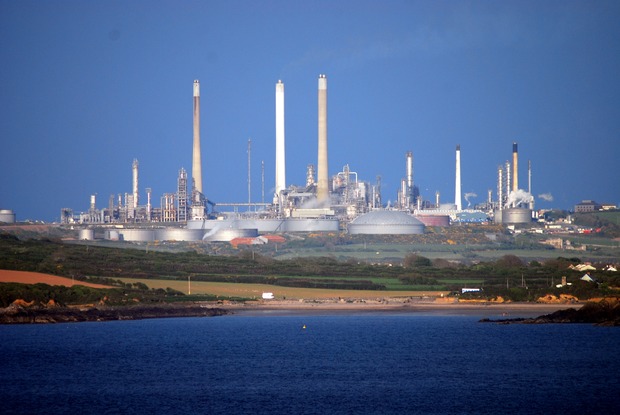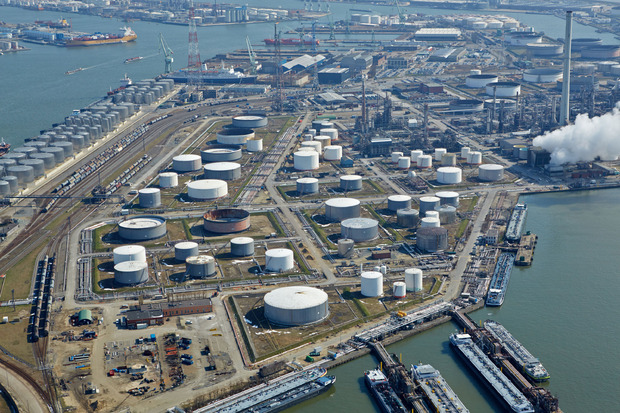Refined Capacity: the future of UK refineries
7 Jan 2015
The end of 2014 saw yet another UK refinery close as the European downstream sector struggled to compete with international competitors. What, if anything, can be done to turn the corner in 2015?
If ever there was an industry in need of a good year, it is the European refining market.
Last year was yet another annus horribilis for refineries in the UK, with Milford Haven in November becoming the third refinery to close in five years.
It was the smallest of the UK refineries, capable of processing 108,000 barrels per day (bpd) and up to five million tonnes of crude oil per year. Owned and operated by US firm Murphy Oil (Murco), Milford Haven was a relatively simple refinery that represented just 6.5% of the UK’s annual crude refining capacity of 73 million tonnes.
With a much larger, more complex and better-connected refinery operated by Valero in Pembroke for a neighbour, it is likely that Milford Haven’s closure will have minimal effect on UK fuel supplies.
However, it was the timing and manner of the closure that was troubling for those working in the UK refining sector.
Our modelling shows that by 2018 we need to decrease crude runs in Europe by 1.6 million barrels per day – that’s twelve Milford Havens
Wood MacKenzie’s Jonathan Leitch
Milford Haven closed after a potential deal to sell the refinery to Swiss firm Klesch Petroleum collapsed.
This failure to reach a deal had echoes of PriceWaterhouseCooper’s failure, as the administrator, to sell the 220,000 bpd Coryton refinery in Essex after its owner Petroplus filed for bankruptcy in 2012.
Petroplus had previously shut down its 117,000 bpd refinery in Teesside in 2009. “Coryton was slap bang in the heartland of South East England, the area with highest demand,” says UK Petroleum Industry Association (UKPIA) director general Chris Hunt.
“It had a pipeline linked with Heathrow, and you couldn’t find a better jewel in terms of refinery, but that couldn’t be sold.”
The reasons that refineries are failing to be sold are numerous, but they boil down to one fact: refining crude oil in Europe is a high-risk, low reward business.
As a result there are few who are willing to invest in the sector, and those who do own assets are apparently keen to get shot of them: Total tried and failed to sell its still-operational Lindsey refinery in Lincolnshire in 2011; meanwhile Indian oil giant Essar was last summer reported to be seeking buyers for its Stanlow refinery in Cheshire, which it acquired from Shell in 2011, although it denied the claims. Later in September Essar mothballed a crude distillation unit at Stanlow, cutting its capacity from around 220,000 bpd to 195,000 bpd, although the bulk of lost product from this small and simple distillation unit comprised low margin fuel oil and naptha.
Excess capacity
Wood Mackenzie downstream principal analyst Jonathan Leitch says UK refineries’ problems are symptomatic of a wider malaise in the European refining sector.
“We’ve been through an extended period of surplus capacity in Europe,” says Leitch.
“Demand in Europe has fallen since 2008 and other refineries in other regions with the advantage of cheaper crude and lower energy costs have had a better time.”
The surplus capacity has been caused not only by the recession, but also by the huge shift among European road users from petrol to diesel-fuelled vehicles.
“Government fiscal policies have driven the market towards diesel on basis of CO2, but European refining capacity is mainly for petrol,” says Hunt.
“In France, for example, 70% of all new vehicle registrations are diesel. We have far too much petrol and far too little diesel which means Europe is importing large amounts of diesel from Russia and aviation fuel from the Middle East.”
The problem lies partly in chemistry and partly in history: the European refining industry deals mainly in Brent crude from the North Sea, which is light and “sweet” with low sulphur levels. According to UKPIA, a barrel of North Sea crude oil will typically yield around 3% Liquid Propane Gas (LPG), 37% petrol, 25% diesel, 20% kerosene (jet fuel/heating oil) and 12% heavy residue used in applications ranging from fuel oil for power generation to bitumen.
Most refineries in Europe were designed and built between the 1950s and 1970s when, says Hunt, “petrol was the only game in town”.
Because of this, little investment has been made – as has been the case in regions such as Russia and the Middle East where crude quality is lower and heavy residue makes up a greater proportion of a barrel – in technology such as hyrdocoking and hydrocrackers that can convert the heavy residue into lighter products like diesel.
Despite the bulk of the UK’s refineries now producing more diesel than petrol (see box, p16), the ratios still fail to match the demand shift to diesel, creating an oversupply of petrol. Until recently, Europe had successfully managed its over-production of petrol and under-production of diesel and jet kerosene by exporting its excess petrol, predominantly to the Middle East, Asia and Africa, and importing diesel and jet kerosene from the Middle East and Russia.
However, says Leitch, demand has fallen in those regions that Europe exports petrol to due to a combination of economic conditions and infrastructure upgrades.
“In Asia demand is falling, while in the Middle East there are big refineries coming online that are sitting on top of crude and using hydrocracking and hydrocoking technologies to produce a high yield of high-value product such as gasoline (petrol), diesel and jet kerosene,” says Leitch.
“In the Middle East there has been a traditional deficit of gasoline, but with these new refineries there is less of a deficit of gasoline and a surplus of diesel. This means more flows of diesel into Europe.”
So not only are Europe’s export markets for excess petroleum drying up, but an increase in the diesel flowing from the Middle East and Russia is likely to start to hurt European refiners’ diesel margins.
“Europe has suffered with gasoline and now the good margin level (from diesel) is going to be eroded,” adds Leitch.
To compound matters, the US shale gas and oil boom is also having an impact. Cheap gas means US refiners’ energy costs are lower than those of their European counterparts.
Meanwhile, according to Hunt, US refineries are also going “flat out” to refine alternative oil such as shale oil, blending it with the market-standard West Texas Intermediate to produce high yields of gasoline and diesel.
Leitch says this is already having an impact, with US refiners eating into Europe’s exports to the West African market.
US lawmakers are currently considering repealing a ban on all exports of crude oil other than those deemed to be in the national interest.
The implication for Europe, already to struggling with the Middle East as a global competitor, could be huge.
“The US could become as big an exporter of refined products as Russia,” says Hunt.
More closures
Faced with such daunting prospects, what must refiners in the UK and the rest of Europe do to secure their future? Putting it bluntly, Leitch says many more closures are needed to make European refining globally competitive.
“Our modelling shows that by 2018 we need to decrease crude runs in Europe by 1.6 million barrels per day – that’s twelve Milford Havens,” says Leitch.
“What this shows is that refinery margins are going to be weak in Europe for the foreseeable future and what we need to see are more closures.”
However, says Leitch, it will not necessarily be the oldest, smallest or most simple refineries that are the ones to close. While European State Aid rules should, in theory, prevent governments from propping up ailing assets, there are still market-based drivers that mean that refinery closures will not be a case of survival-of-the-fittest.
“It is not necessarily the weakest refineries shutting down,” says Leitch. “We tend to see refineries being put up for sale before they go down and we have had traders that have bought these refineries. Some of these should have closed, but instead received a new lease of life.
“There are some smaller loss-making refineries where, if they close down that’s the end of their business, and for that reason they continue to operate. At the other end, some of the major oil companies may own several refineries across Europe. The two or three they choose to close down will not be the worst in Europe.”
Despite such glum pronouncements about the inevitability of further refinery closures, Leitch is keen to point out that the closures needed to ease Europe’s chronic overcapacity equate to just 10% of Europe’s total crude oil refining capacity.
“There are some fantastic refineries in Europe, including some that are world class in the UK, and these will continue to make a profit whatever happens,” he says. “We are just talking about taking out a relatively small amount of capacity to get balanced.”
Leitch says that those “still standing” when others have fallen will be “in a better market”.
For some, he says, the key to survival will be investment, pointing to ExxonMobil’s Esso Antwerp refinery as a good example of what can be done.
In June last year the US oil major announced a $1 billion (£640m) investment in the construction of a delayed coker unit at its 305,000 bpd Esso Belgium plant.
The unit will be used to treat the heavier, higher sulphur residual product that, as described above, can account for 12% of a barrel of Brent crude.
Instead of being sold onto the low margin fuel oil market, the delayed coker unit will convert the residual product into diesel.
When announcing the investment ExxonMobil said it was doing so “despite extremely low margins and industry-wide losses in Europe”.
Hunt says such strategic investments in the face of mounting losses is beyond the reach of most refiners.
Environmental burden
Investments in upgrades like delayed coker units are further hampered, says Hunt, by the fact that refineries across Europe are facing huge costs just to stay open.
“UK and EU refineries subject to whole plethora of environmental regulations that our global competitors are not subject to,” he says.
According to a 2013 report prepared for UKPIA by IHS Purvin & Gertz, EU legislation such as the Industrial Emissions Directive and UK policies such as the Carbon Price Floor will require UK refineries to make £5.5 billion in capital investments between 2013 and 2030 just to stay open.
When operational costs are factored in, the legislative bill for UK refineries over this period becomes £11.4 billion, and this is before as-yet-undefined pieces of EU legislation such as the Energy Efficiency Directive and an update to the Fuel Quality Directive have been considered.
“No business can stand that sort of investment level for no return,” says Hunt.
He warns that further refinery closures would make Britain dangerously reliant on fuel imports, and that the government must act to reduce the impact of environmental measures on refiners.
“Where government can assist the industry is by creating a level playing field with our global competitors through mitigation for the environmental legislation impacts on our businesses,” says Hunt.
“We are not asking Government to repeal the legislation, but when an industry is subject to global competition some consideration must be made of the legislation’s harmful impact, especially on an industry that is of strategic importance from a national security point-of-view.”
Efficiency gains
Short of effecting a government policy change or finding $1 billion to build a hydrocoker, there are other things that refiners can do to improve their market position, according to Emerson Process Management refining sales director Ed Schodowski…
To read the rest of the article, click on the pdf above.





